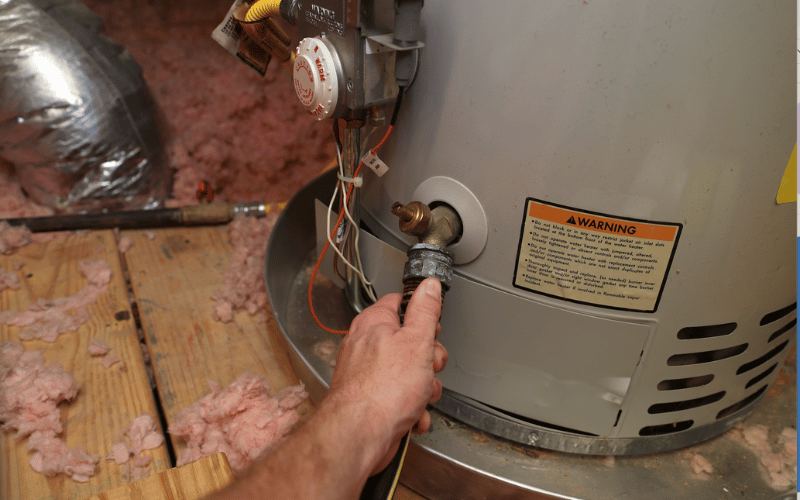Useful Techniques for Maintaining Your Home's Hot Water SystemWays to Properly Care for Your Home's Hot Water SystemTop Ways to Care for Your Home's Hot Water System Successfully
Useful Techniques for Maintaining Your Home's Hot Water SystemWays to Properly Care for Your Home's Hot Water SystemTop Ways to Care for Your Home's Hot Water System Successfully
Blog Article
How do you actually feel on the subject of Water Heater Maintenance Tips You Can't Afford to Forget?

Warm water is necessary for daily convenience, whether it's for a rejuvenating shower or washing dishes. To guarantee your hot water system runs successfully and lasts longer, normal maintenance is crucial. This post offers practical ideas and insights on just how to keep your home's hot water system to stay clear of interruptions and pricey repair work.
Intro
Maintaining your home's hot water system could appear daunting, however with a couple of simple actions, you can guarantee it operates efficiently for years to find. This overview covers everything from comprehending your warm water system to DIY maintenance tips and understanding when to employ professional assistance.
Value of Maintaining Your Hot Water System
Routine maintenance not only expands the life-span of your hot water system however likewise guarantees it operates effectively. Disregarding upkeep can lead to reduced effectiveness, greater power bills, and even early failing of the system.
Signs Your Hot Water System Requirements Upkeep
Recognizing when your warm water system needs interest can stop significant issues. Keep an eye out for signs such as irregular water temperature level, unusual noises from the heating system, or rustic water.
Recognizing Your Hot Water System
Prior to diving right into upkeep jobs, it's helpful to comprehend the basic components of your hot water system. Usually, this includes the water heater itself, pipes, anode rods, and temperature level controls.
Month-to-month Upkeep Tasks
Routine regular monthly checks can assist capture minor issues before they rise.
Flushing the Hot Water Heater
Flushing your hot water heater removes debris build-up, boosting effectiveness and extending its life.
Checking and Replacing Anode Rods
Anode rods protect against corrosion inside the tank. Inspecting and changing them when worn is vital.
Checking and Changing Temperature Level Setups
Changing the temperature setups makes certain ideal efficiency and security.
DIY Tips for Maintenance
You can execute numerous upkeep tasks on your own to maintain your warm water system in top problem.
Looking for Leaks
Routinely inspect pipelines and links for leakages, as these can result in water damage and greater bills.
Examining Stress Alleviation Valves
Evaluating the pressure safety valve ensures it operates properly and avoids too much stress accumulation.
Insulating Pipelines
Insulating warm water pipes lowers warmth loss and can conserve power.
When to Call an Expert
While DIY upkeep is advantageous, some concerns need professional expertise.
Facility Issues Calling For Professional Aid
Examples consist of significant leaks, electrical problems, or if your water heater is continually underperforming.
Regular Specialist Upkeep Perks
Specialist maintenance can include extensive assessments, tune-ups, and making certain conformity with safety and security requirements.
Final thought
Normal maintenance of your home's hot water system is essential for performance, long life, and expense savings. By following these tips and recognizing when to seek professional aid, you can make sure a reputable supply of hot water without unanticipated disruptions.
Water Heater Maintenance Tips
Test the TPR Valve
Shut off the power and the cold-water supply valve. Place a bucket under the pipe connected to the temperature-pressure-release (TPR) valve on the top or side of the tank. (This valve opens if the tank pressure gets too high.) Lift the valve’s tab to let some water out, then let go. If water keeps flowing, drain the tank partway, unscrew the old valve with a pipe wrench, and install a new one. Check the Anode Rod
Put a hose to the tank’s drain cock and let out a few gallons of water. Now fit a 1 1/16-inch socket onto the rod’s hex head on top of the heater (or under its top plate) and unscrew the rod. If it’s less than ½ inch thick or coated with calcium, buy a new one, wrap its threads with Teflon tape, put it back in the tank, and tighten securely. Use this segmented rod if headroom above the tank is limited. Drain the Tank and Wash Out Sediment
Drain the remaining water in the tank into the bucket, then stir up the sediment on the tank’s bottom by briefly opening the cold-water supply valve. Drain and repeat until clean water comes out of the hose. Close the drain cock, refill the tank, and turn its power back on. Adjust the Temperature
Find the temperature dial on the side of the tank and unscrew its cover. Adjust the dial to 120 degrees using a flathead screwdriver. For every 10 degrees the temperature is lowered, you can expect to save up to 5 percent in energy costs. Turn the water heater off or the thermostat down to its lowest setting if you plan to be away from home for more than three days. Insulate the Pipes
Buy some self-sticking 3/8-inch-thick foam pipe insulation that matches the pipes’ diameter. Slide the foam over the hot-and cold-water pipes as far as you can reach. Insulating the cold-water pipe prevents condensation in summer. Peel the tape and squeeze the insulation closed. If the pipe is 6 inches or less from the flue, cover it with 1-inch-thick unfaced fiberglass pipe wrap. https://www.thisoldhouse.com/plumbing/21016402/how-to-maintain-a-water-heater

I stumbled upon that content about How to Maintain a Hot Water Heater in a Few Simple Steps while doing research the web. Are you aware of somebody else who is interested by the niche? Take a moment to promote it. Thank you so much for going through it.
Start Now Report this page